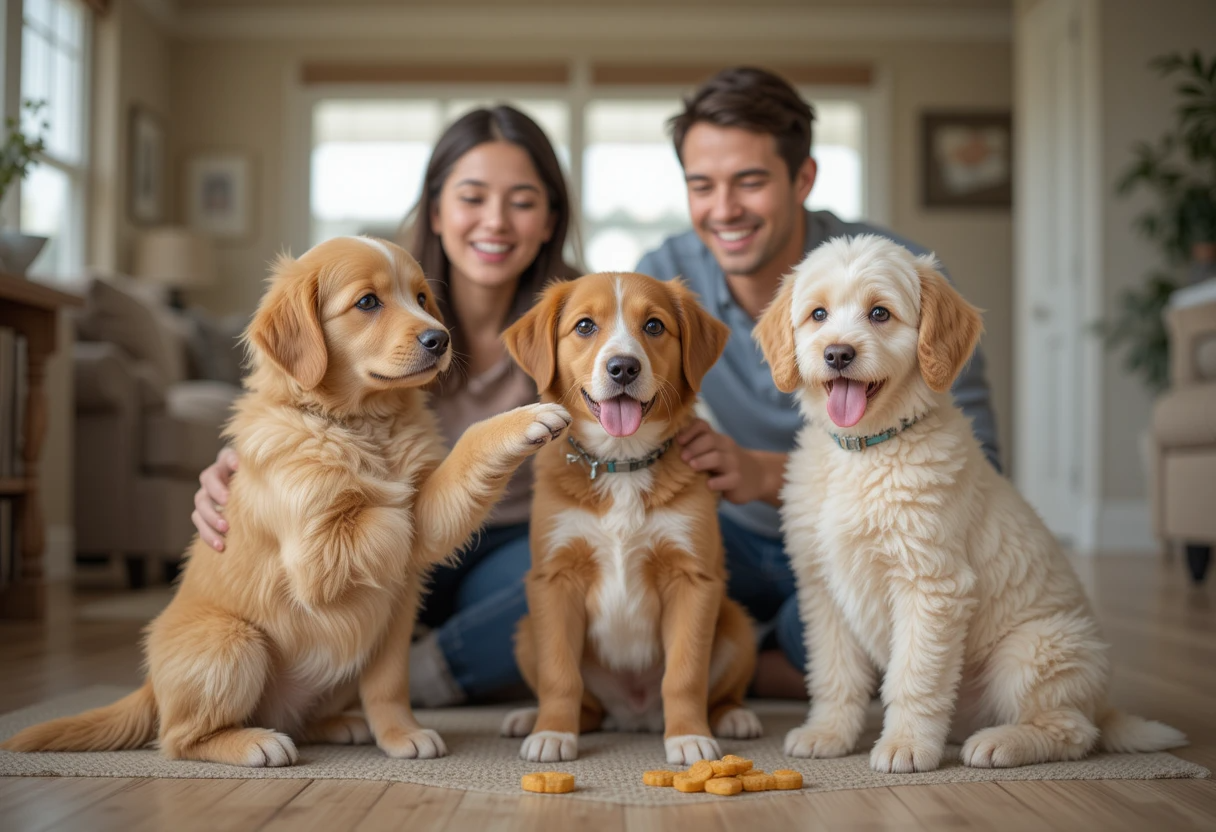Thinking about getting a puppy? Bringing a new furry friend into your home is super exciting, but it also means taking on some big responsibilities—especially training your puppy effectively. For beginners, choosing the easiest puppies to train can make all the difference in creating a smooth, fun experience.
Not all puppies are the same—some learn faster and are more eager to please. That’s why picking the easiest puppies to train for beginners can help you avoid frustration and build a stronger bond from the start.
In this guide, we’ll break down what makes a puppy easier to train, highlight the top breeds known for being beginner-friendly, and share simple, proven training tips to help you raise a well-behaved and happy dog.
So whether you’re a first-time dog parent or just want a pup that’s easy to handle, this article will help you find the perfect match and get started on the right paw.
What Makes a Puppy Easy to Train?
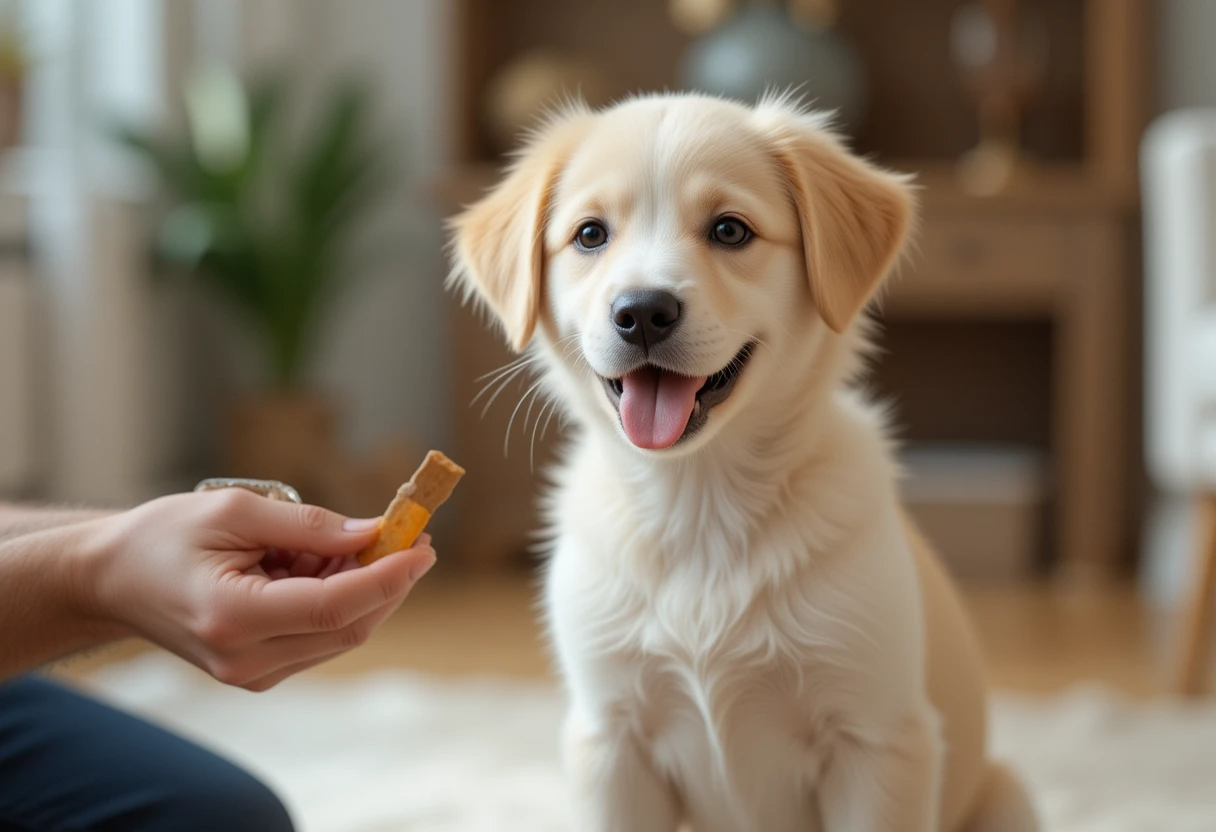
Before diving into specific breeds, it’s important to understand the key characteristics that contribute to a puppy’s trainability. These traits are often influenced by genetics, breeding history, and the dog’s original purpose.
Key Characteristics of Easily Trainable Puppies
-
Intelligence: Highly intelligent puppies can more quickly make connections between commands and desired behaviors. They process information faster and retain training lessons more effectively.
-
Eagerness to Please: Dogs bred to work closely with humans often have a strong desire to please their owners, making them more motivated to learn and follow commands.
-
Food Motivation: Puppies that are highly motivated by food rewards tend to be easier to train using positive reinforcement techniques.
-
Focus and Attention Span: The ability to maintain focus during training sessions is crucial. Puppies that can concentrate for longer periods typically progress faster in their training.
-
Adaptability: Puppies that adapt well to new environments, situations, and stimuli generally have an easier time learning various training exercises in different contexts.
-
Energy Level: While high energy isn’t necessarily a negative trait, puppies with moderate energy levels often find it easier to concentrate during training sessions compared to extremely hyperactive ones.
-
Natural Temperament: Puppies with balanced temperaments—neither too shy nor too aggressive—typically respond better to training efforts.
-
Sociability: Dogs that are naturally social and comfortable around people tend to be more receptive to human guidance and instruction.
Scientific research has consistently shown that these traits significantly influence a puppy’s trainability. According to studies on canine cognition and behavior, dogs with these characteristics learn new commands in fewer repetitions and retain them longer than those without them.
The 10 Easiest Puppies to Train
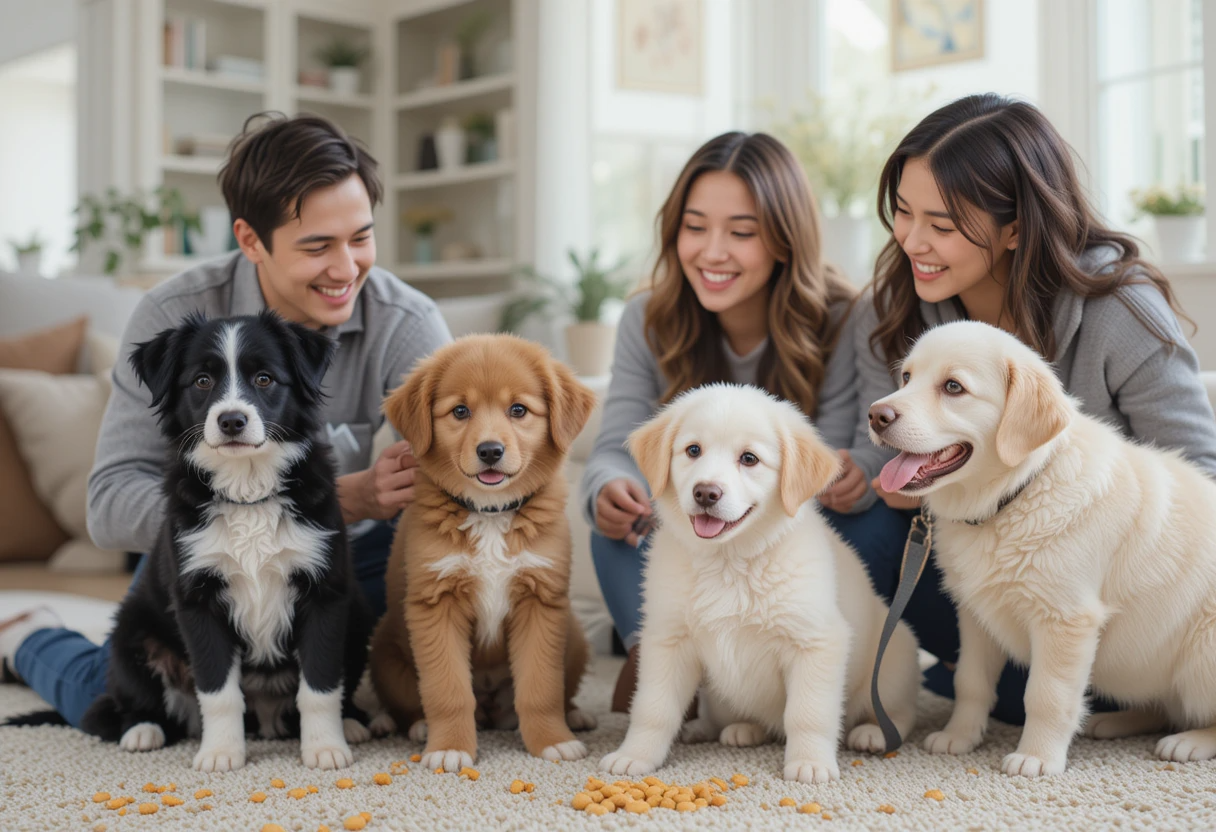
Based on extensive research, expert opinions, and the experiences of professional dog trainers, the following breeds consistently rank as the easiest puppies to train. Each brings unique traits to the training experience, but all share the fundamental characteristics that make training more straightforward.
1. Border Collie
Key Characteristics:
- Exceptional intelligence (often ranked #1 in canine intelligence studies)
- Intense focus and work ethic
- Strong desire to please their handlers
- Natural problem-solving abilities
Border Collies were originally bred for herding livestock, which required them to work independently yet follow complex commands from shepherds. This breeding history has produced dogs with remarkable intelligence and an almost unmatched ability to learn and execute commands.
Dr. Stanley Coren, a renowned dog intelligence researcher, consistently ranks Border Collies at the top of his canine intelligence scale, noting that they can learn a new command with fewer than five repetitions and follow it correctly 95% of the time.
However, their intelligence comes with a caveat: Border Collies need ample mental stimulation and physical exercise. Without proper outlets for their energy and intelligence, they may develop problematic behaviors.
2. Poodle (Standard, Miniature, and Toy)
Key Characteristics:
- High intelligence across all size varieties
- Eager to please and responsive to positive reinforcement
- Versatile training aptitude
- Excellent problem-solving skills
- Minimal shedding (a bonus for many owners)
Poodles combine intelligence with a strong desire to please their owners, making them exceptionally trainable. Originally bred as water retrievers, they have a natural aptitude for learning and performing tasks.
All three size varieties—standard, miniature, and toy—share these trainable traits, allowing owners to choose the size that best fits their living situation without sacrificing trainability. Their intelligence and adaptability make them suitable for various dog activities, from basic obedience to advanced performance sports.
“Poodles are notorious for their intelligence, and they’re also versatile, making them easy to train. Standard, miniature, and toy poodles are known for their ability to grasp commands quickly, making them excellent family pets. They are people-oriented and thrive on positive reinforcement,” notes Dog Zen, a respected dog training resource.
3. Labrador Retriever
Key Characteristics:
- Strong food motivation (making reward-based training highly effective)
- Eager to please and naturally sociable
- Patient temperament and adaptability
- Excellent retention of learned behaviors
- Forgiving of training inconsistencies (ideal for novice trainers)
The Labrador Retriever’s popularity as a family pet is matched by its reputation as one of the most trainable breeds. Their friendly, outgoing nature and desire to please humans make them receptive to training efforts, even from less experienced handlers.
“The Labrador Retriever is often considered one of the easiest breeds to train due to their intelligence, eagerness to please, and gentle nature,” according to dog training experts on Quora. Their strong food motivation makes positive reinforcement training particularly effective, as they’re willing to work diligently for treats and praise.
Labs’ patient temperament also means they’re more forgiving of training mistakes, making them ideal for first-time dog owners who are still learning effective training techniques themselves.
4. Golden Retriever
Key Characteristics:
- Highly sociable and people-oriented
- Natural desire to work cooperatively with humans
- Patient temperament well-suited for training
- Responsive to positive reinforcement
- Adaptable to various training methods
Golden Retrievers combine intelligence with an exceptionally gentle, eager-to-please temperament. They form strong bonds with their human families and are naturally inclined to want to make their owners happy, which translates into a willingness to learn and follow commands.
Their patient nature makes them ideal for families with children and for first-time dog owners. They tend to be forgiving of inconsistencies in training and respond exceptionally well to positive reinforcement techniques.
As noted in many training resources, Golden Retrievers are “intelligent dogs and are known to be easy to train.” Their natural retrieving instincts also make certain training exercises, like fetch and return commands, easier to teach.
5. German Shepherd
Key Characteristics:
- High intelligence and problem-solving abilities
- Strong work ethic and focus
- Loyalty that fosters attentiveness to handlers
- Quick to learn new commands
- Versatile training capabilities
German Shepherds were developed specifically for their working abilities, including their capacity to learn and execute complex commands. Their intelligence and focus make them exceptionally trainable, allowing them to excel in various roles from family companions to service dogs to police and military work.
According to experts, German Shepherds “excel in their ability to learn agility and obedience commands.” Their strong bond with their handlers and natural protective instincts make them highly attuned to their owners’ guidance and direction.
While they’re highly trainable, German Shepherds do best with confident handlers who can provide clear, consistent leadership and plenty of mental and physical stimulation.
6. Papillon
Key Characteristics:
- Exceptional intelligence in a small package
- Alert and attentive nature
- Eager to please despite their independent streak
- Quick to grasp new concepts
- Versatile training capabilities despite small size
Don’t let their diminutive size and elegant appearance fool you—Papillons are among the most trainable of the small dog breeds. Named for their butterfly-like ears (“papillon” means butterfly in French), these clever little dogs combine intelligence with an eagerness to learn.
“The papillon breed is one of the easiest dog breeds to train, but these pups need consistency, dedication, and ample socialization with other dogs,” notes Pet Palace Resort. Their quick minds and energetic nature make them excellent candidates for dog sports like agility and obedience competitions, where they often outperform much larger breeds.
Their small size makes them suitable for apartment living, but they still require regular mental stimulation and training to prevent boredom-related behaviors.
7. Shetland Sheepdog
Key Characteristics:
- Highly intelligent and quick to learn
- Strong herding instincts that foster attentiveness
- Eager to please their owners
- Sensitive to handler cues and emotions
- Excellent memory for commands
Shetland Sheepdogs, or “Shelties,” share many of the trainable traits of their larger collie cousins. Their herding background has produced a breed that’s naturally attentive to human direction and quick to respond to commands.
According to Trupanion, “Shetland Sheepdogs or ‘Shelties’ are highly trainable and intelligent pups, making them of course easy to train. Bred to be herding dogs, they are known for having a strong desire to please their owners and shine when it comes to agility and obedience tasks.”
Their sensitivity and intelligence mean that positive, reward-based training methods work best; harsh corrections can damage their confidence and willingness to learn.
8. Doberman Pinscher
Key Characteristics:
- Exceptional intelligence and focus
- Strong desire to work with their handler
- Quick learning abilities
- Loyal nature that fosters attentiveness
- Natural protective instincts that can be channeled through training
Dobermans combine intelligence with a strong work ethic and loyalty to their families. Originally bred as protection dogs, they’re naturally attentive to their handlers and quick to learn new commands and behaviors.
Their intelligence and focus allow them to excel at complex training tasks, and their desire to work with their humans makes them responsive to consistent, positive training methods. As noted by dog training experts, Dobermans are among the most trainable breeds due to their combination of intelligence and loyalty.
While their protective nature makes them excellent guardians, it also means early socialization and consistent training are essential to ensure they develop into well-adjusted companions.
9. Australian Shepherd
Key Characteristics:
- High intelligence and problem-solving abilities
- Strong work ethic and desire for a purpose
- Natural responsiveness to handler cues
- Adaptability to various training situations
- Excellent memory for learned commands
Australian Shepherds were developed to be versatile herding dogs, requiring both intelligence and the ability to work cooperatively with humans. These traits make them highly trainable, though they do best with owners who can provide plenty of mental and physical stimulation.
According to Spark Paws, Australian Shepherds rank among the top 10 easiest dogs to train due to their combination of intelligence, enthusiasm, and desire to work with their handlers. They excel in various dog sports and activities that challenge their minds and bodies.
Their high energy levels mean they need owners who can commit to regular exercise and training; without appropriate outlets, their intelligence can lead to problem behaviors.
10. Bichon Frise
Key Characteristics:
- Social and people-oriented nature
- Playful attitude that can be channeled into training
- Desire to please their owners
- Good focus for a small breed
- Adaptability to different living situations
Bichon Frises are cheerful, affectionate dogs with a natural desire to please their humans. While they may not have the intense work ethic of some herding or working breeds, their people-oriented nature makes them responsive to positive training methods.
“Bichon Frises are known for their cheerful and affectionate nature,” notes Pride and Groom. Their intelligence combined with their desire for human attention makes them enjoyable to train, especially when positive reinforcement techniques are used.
Their small size and adaptability make them suitable for various living situations, from apartments to larger homes, providing they receive adequate exercise and mental stimulation.
Understanding the Critical Training Period for Puppies
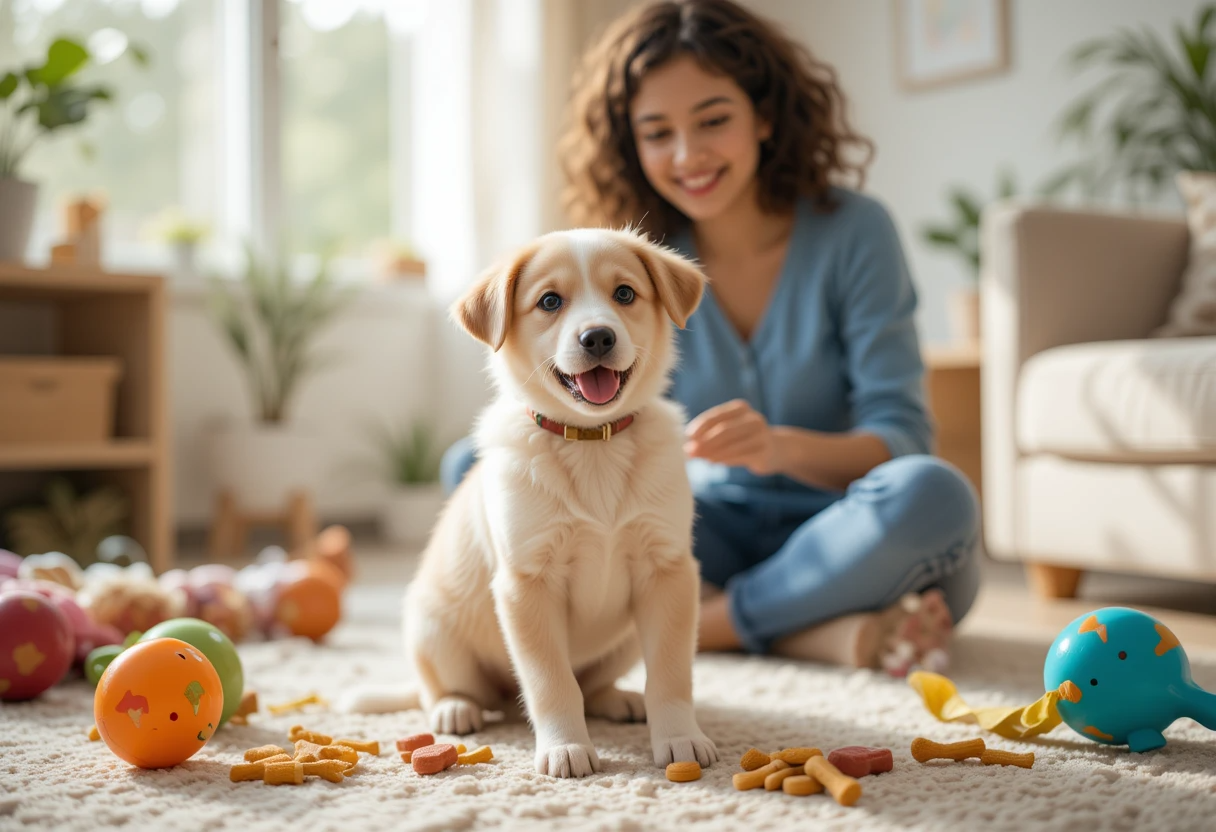
Successful training begins with understanding when puppies are most receptive to learning. Research in canine development has identified key developmental windows that significantly impact training success.
The Critical Socialization Period (3-14 weeks)
The most crucial window for puppy development occurs between 3 and 14 weeks of age. During this period, puppies are extraordinarily receptive to new experiences and learning.
According to the UC Davis School of Veterinary Medicine, “The critical social development period for dogs is approximately between 3 and 14 weeks.” During this time, puppies form their understanding of what is normal and safe in their environment.
This period is particularly important for socialization—introducing your puppy to a wide variety of people, animals, environments, and experiences in a positive way. Proper socialization during this window significantly increases the likelihood of having a well-adjusted adult dog who is easier to train.
Early Training Foundations (8-16 weeks)
Most puppies go home with their new families around 8-12 weeks of age, placing them squarely in the critical socialization period. This is the ideal time to begin basic training.
According to the American Kennel Club, this is a “critical socialization period that ends by 16 weeks.” During this time, puppies should be exposed to environmental stimuli and begin learning basic commands like “sit,” “stay,” and “come.”
Training during this period should focus on positive experiences, with an emphasis on reward-based methods. Short, fun training sessions several times a day are more effective than longer, more demanding sessions that might overwhelm a young puppy.
Effective Training Techniques for Easy Success
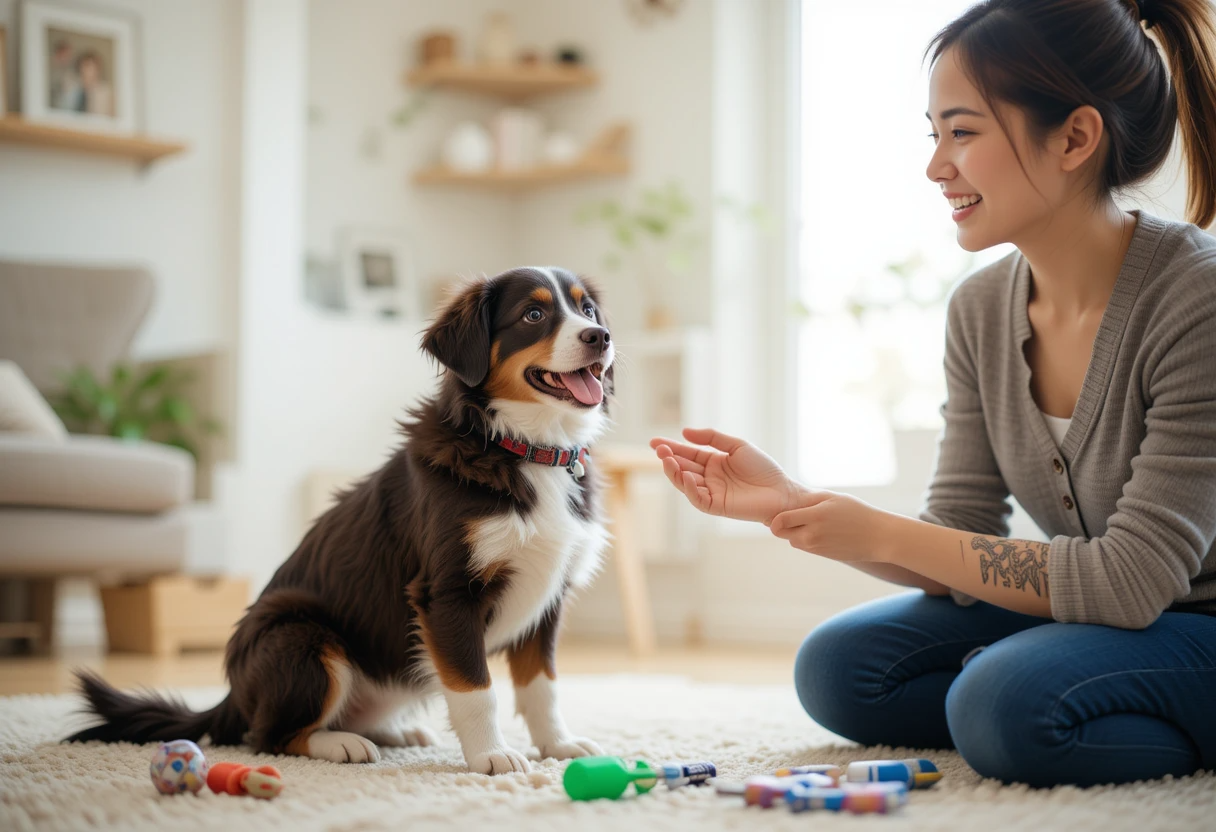
The right training methods can significantly enhance the natural trainability of the breeds discussed above. Modern dog training emphasizes positive reinforcement techniques, which research has shown to be both more humane and more effective than aversive methods.
Positive Reinforcement Training
Positive reinforcement training involves rewarding behaviors you want to see more of, which increases the likelihood of those behaviors being repeated. This approach is particularly effective with the trainable breeds mentioned earlier.
A study published in the journal PLOS ONE found that “training methods based on the use of rewards are claimed to be more humane and equally or more effective than aversive or mixed methods.”
Key aspects of positive reinforcement training include:
-
Timing: Rewards must be given immediately after the desired behavior to create a clear connection between the action and the reward.
-
Consistency: Using the same commands and rewarding the same behaviors consistently helps puppies understand what’s expected of them.
-
High-Value Rewards: Using especially appealing treats for more challenging behaviors or distracting environments can increase motivation.
-
Gradual Progression: Starting with simple commands in quiet environments before gradually increasing difficulty and distractions builds confidence and success.
The Three C’s of Dog Training
Successful puppy training adheres to what trainers call the “Three C’s”:
- Criteria: Clear, specific expectations for what behavior you want.
- Consequence: Immediate positive outcomes (rewards) when the criteria are met.
- Consistency: Regular practice with the same expectations and rewards.
Training Schedule for Optimal Results
Puppies learn best with short, frequent training sessions rather than long, infrequent ones. A good rule of thumb is:
- 3-5 sessions per day
- 3-5 minutes per session
- Focus on 1-2 commands per session
- End on a successful note
This approach prevents mental fatigue while maximizing learning opportunities throughout the day.
Common Puppy Training Challenges and Solutions
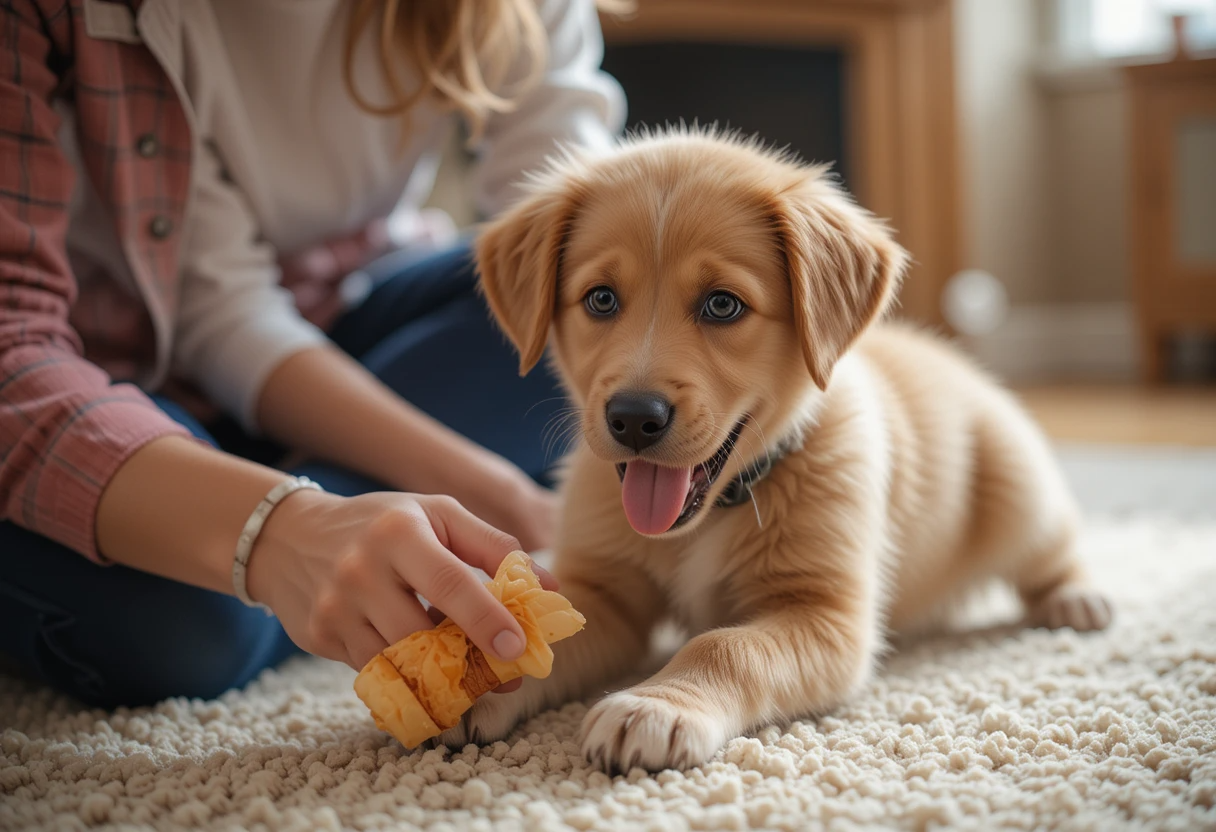
Even with the most trainable breeds, challenges can arise. Here are some common issues and evidence-based solutions:
1. House Training Accidents
Solution: Establish a consistent schedule, reward successful outdoor eliminations immediately, and supervise closely indoors. Crate training can be particularly helpful, as dogs naturally avoid soiling their sleeping area.
2. Chewing and Destructive Behavior
Solution: Provide appropriate chew toys, exercise regularly to reduce excess energy, and use taste deterrents on forbidden items. Remember that teething puppies have a natural need to chew—redirect rather than punish.
3. Nipping and Play Biting
Solution: Teach bite inhibition by briefly stopping play when biting occurs, provide appropriate chew toys, and reward gentle play. Never play roughly with your hands, as this can encourage nipping.
4. Leash Pulling
Solution: Start training in low-distraction environments, reward walking on a loose leash, change direction when pulling occurs, and use high-value treats for reinforcement in more challenging situations.
5. Separation Anxiety
Solution: Gradually acclimate puppies to alone time, create positive associations with departure cues, provide engaging toys, and avoid making arrivals and departures emotionally charged.
As noted by dog training experts, “If you encounter challenges like whining or barking, check if your puppy needs a potty break. If the puppy doesn’t have to go then you might just need to ignore them for a bit, but maintain consistent training methods.”
If you’re curious about the most popular Japanese dog breeds, check out our detailed guide on Top 10 Most Popular Japanese Dog Breeds Everyone Loves. From the loyal Shiba Inu to the gentle Akita, these breeds have won hearts worldwide for their unique traits and charm.
Expert Training Tips for First-Time Owners
Professional dog trainers offer these valuable tips for those new to puppy training:
-
Start Early: Begin training the day your puppy comes home, focusing on simple commands and house rules.
-
Be Patient: Progress may be slow at times—remember that consistency over time yields results.
-
Keep Sessions Short: Young puppies have limited attention spans; 3-5 minute sessions several times daily are more effective than longer sessions.
-
Use the Right Rewards: Discover what truly motivates your puppy—special treats, favorite toys, or enthusiastic praise.
-
Focus on the Positive: Rather than punishing unwanted behavior, redirect and reward appropriate alternatives.
-
Be Consistent: Ensure all family members use the same commands and enforce the same rules.
-
Practice in Different Environments: Once your puppy masters a command at home, practice in increasingly distracting environments.
-
Socialize Extensively: Expose your puppy to various people, animals, and experiences during the critical socialization window.
-
Enroll in Puppy Classes: Professional guidance and structured socialization opportunities benefit both puppy and owner.
-
Remember Individual Differences: Even within an “easy to train” breed, individual temperament varies—adjust your approach to suit your specific puppy.
Conclusion
While certain breeds are genetically predisposed to be easier to train, successful training ultimately depends on the owner’s commitment, consistency, and use of appropriate techniques. The easiest puppies to train—Border Collies, Poodles, Labrador Retrievers, Golden Retrievers, German Shepherds, Papillons, Shetland Sheepdogs, Doberman Pinschers, Australian Shepherds, and Bichon Frises—offer a wonderful foundation for training success through their intelligence, eagerness to please, and receptiveness to positive reinforcement.
By understanding the critical socialization period, implementing positive training techniques, and addressing common challenges with evidence-based solutions, you can help your puppy develop into a well-behaved adult dog regardless of breed. The journey requires patience and consistency but offers immense rewards in the form of a harmonious relationship with your canine companion.
Whether you’re a first-time dog owner or an experienced handler, choosing one of these trainable breeds and implementing the techniques discussed can set you and your puppy on the path to training success and a lifetime of positive companionship.
Pitbulls are known for their strong loyalty and affectionate nature towards their families. If you’re curious about the different types of Pitbull breeds and what makes each unique, you should definitely check out our detailed guide on the Top 5 Types of PitBulls Breeds Known for Their Loyalty. This article will help you understand the traits of each breed and which one might be the perfect loyal companion for you.
FAQs
Basic training should begin immediately when you bring your puppy home (typically around 8 weeks of age). The critical socialization and learning period for puppies is between 3-14 weeks of age. During this time, they are most receptive to new experiences and forming positive associations. Start with simple commands like “sit” and basic house rules, keeping training sessions very short (3-5 minutes) but frequent throughout the day. What is the best age to start training a puppy?
Can older dogs be trained as easily as puppies?
While puppies tend to learn more quickly due to fewer ingrained habits, older dogs can absolutely be trained successfully. The saying “you can’t teach an old dog new tricks” is a myth. Older dogs often have longer attention spans and can focus better than puppies. Training may take more patience and consistency to overcome established habits, but positive reinforcement methods work well for dogs of all ages. The key is to be consistent and use rewards that truly motivate your specific dog.
What training method works best for puppies?
Positive reinforcement training is scientifically proven to be the most effective method for puppy training. This approach rewards desired behaviors with treats, praise, or play, increasing the likelihood that the behavior will be repeated. According to research published in scientific journals, reward-based training methods are not only more humane but also produce better long-term results than punishment-based approaches. Short, frequent training sessions using clear cues and immediate rewards create the fastest learning.
How can I address stubborn behavior during training?
What appears as “stubbornness” is often confusion, fear, or lack of sufficient motivation. First, ensure your training cues are clear and consistent. Second, use higher-value rewards for more challenging behaviors or distracting environments. Third, break complex behaviors into smaller steps that your puppy can master gradually. Finally, examine the training environment for distractions that might be interfering with focus. Remember that puppies, like children, have limited attention spans and may need frequent breaks during learning.
Is crate training necessary for puppies?
While not absolutely necessary, crate training offers numerous benefits for both puppies and owners. When done properly, a crate provides a safe, comfortable space where puppies can rest and feel secure. It significantly aids in house training by leveraging dogs’ natural reluctance to soil their sleeping area. Crate training also prevents destructive behaviors when puppies cannot be supervised and helps prepare dogs for potential veterinary stays or travel situations. The key is to associate the crate with positive experiences and never use it as punishment.
For helpful advice on crate training, check out Kennel Training Puppy at Night: Quick & Easy Tips for Fast Results.
